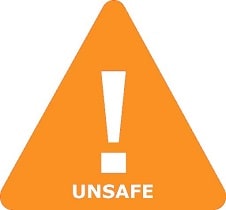Is EINECS 205-841-9 Safe in Breastfeeding
Question
I am a breastfeeding mother and i want to know if it is safe to use EINECS 205-841-9? Is EINECS 205-841-9 safe for nursing mother and child? Does EINECS 205-841-9 extracts into breast milk? Does EINECS 205-841-9 has any long term or short term side effects on infants? Can EINECS 205-841-9 influence milk supply or can EINECS 205-841-9 decrease milk supply in lactating mothers?
EINECS 205-841-9 lactation summary

- DrLact safety Score for EINECS 205-841-9 is 5 out of 8 which is considered Unsafe as per our analyses.
- A safety Score of 5 indicates that usage of EINECS 205-841-9 may cause serious side effects in breastfed baby.
- Our study of different scientific research indicates that EINECS 205-841-9 may cause moderate to high side effects or may affect milk supply in lactating mother.
- Our suggestion is to use safer alternate options rather than using EINECS 205-841-9 .
- It is recommended to evaluate the advantage of not breastfeeding while using EINECS 205-841-9 Vs not using EINECS 205-841-9 And continue breastfeeding.
- While using EINECS 205-841-9 Its must to monitor child for possible reactions. It is also important to understand that side effects vary largely based on age of breastfed child and time of medication in addition to dosage.
- Score calculated using the DrLact safety Version 1.2 model, this score ranges from 0 to 8 and measures overall safety of drug in lactation. Scores are primarily calculated using publicly available case studies, research papers, other scientific journals and publically available data.
Answer by Dr. Ru: About EINECS 205-841-9 usage in lactation
No data are available
Answer by DrLact: About EINECS 205-841-9 usage in lactation
Because little information is available on the use of EINECS 205-841-9 during breastfeeding, an alternate drug may be preferred, especially while nursing a newborn or preterm infant.
EINECS 205-841-9 Side Effects in Breastfeeding
A woman with severe depression took EINECS 205-841-9 100 to 120 mg daily, as well as pimozide, diazepam and alprazolam during pregnancy and postpartum. She breastfed her infant until about 2 weeks postpartum when the infant developed abdominal distension and feeding intolerance. The symptoms resolved on discontinuation of breastfeeding.[1]
EINECS 205-841-9 Possible Effects in Breastfeeding
Nine subjects were treated with an average dose of 29 mg daily (range10 to 40 mg) of oral EINECS 205-841-9 day for an average of 16 days. Serum prolactin levels increased by 3 mcg/L.[2]The clinical relevance of these findings in nursing mothers is not known. The prolactin level in a mother with established lactation may not affect her ability to breastfeed.
Alternate Drugs
Amoxapine(Safe)
Milnacipran(Unsafe)
Desvenlafaxine(Safe)
Trazodone(Safe)
Duloxetine(Safe)
Nortriptyline(Safe)
Lamotrigine(Low Risk)
Escitalopram(Safe)
Venlafaxine(Safe)
Vortioxetine(Low Risk)
Clomipramine(Safe)
Sertraline(Safe)
Levomilnacipran(Unsafe)
Trimipramine(Low Risk)
Paroxetine(Safe)
Dothiepin(Safe)
Tranylcypromine(Unsafe)
Mirtazapine(Safe)
Fluvoxamine(Safe)
Fluoxetine(Low Risk)
Citalopram(Safe)
Moclobemide(Safe)
Amitriptyline(Safe)
Tranylcypromine(Unsafe)
Moclobemide(Safe)
